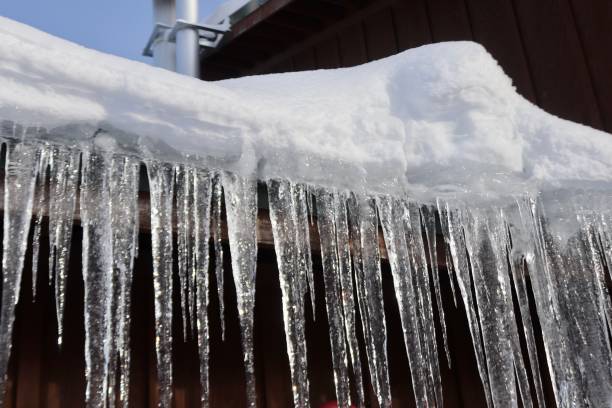Protect Against Frozen Pipes in Winter: Expert Strategies
Protect Against Frozen Pipes in Winter: Expert Strategies
Blog Article
Presented here further down you'll find more first-rate ideas relating to Winter Plumbing Precautions: Preventing Frozen Pipes.

Cold weather can wreak havoc on your pipes, particularly by freezing pipelines. Here's exactly how to avoid it from taking place and what to do if it does.
Intro
As temperatures decline, the danger of frozen pipelines increases, potentially causing expensive repair work and water damage. Understanding exactly how to avoid icy pipes is vital for home owners in cold climates.
Recognizing Frozen Pipelines
What triggers pipelines to freeze?
Pipes freeze when revealed to temperature levels listed below 32 ° F (0 ° C) for extended periods. As water inside the pipelines ices up, it expands, putting pressure on the pipe walls and possibly causing them to burst.
Dangers and problems
Icy pipelines can cause water supply disturbances, residential property damage, and expensive fixings. Ruptured pipelines can flooding homes and trigger substantial architectural damages.
Signs of Frozen Piping
Identifying icy pipes early can prevent them from bursting.
How to identify icy pipelines
Seek lowered water circulation from taps, uncommon smells or noises from pipelines, and visible frost on revealed pipes.
Avoidance Tips
Shielding susceptible pipes
Cover pipelines in insulation sleeves or use warm tape to protect them from freezing temperatures. Concentrate on pipes in unheated or exterior areas of the home.
Heating methods
Maintain indoor spaces sufficiently heated, especially locations with pipes. Open up cupboard doors to permit cozy air to distribute around pipelines under sinks.
Safeguarding Outside Pipes
Garden hoses and exterior taps
Separate and drain garden hose pipes prior to winter season. Install frost-proof faucets or cover exterior faucets with insulated caps.
What to Do If Your Pipelines Freeze
Immediate activities to take
If you believe icy pipelines, maintain taps open up to eliminate stress as the ice melts. Utilize a hairdryer or towels soaked in warm water to thaw pipes gradually.
Long-Term Solutions
Structural modifications
Take into consideration rerouting pipes away from exterior wall surfaces or unheated areas. Include extra insulation to attic rooms, basements, and crawl spaces.
Updating insulation
Invest in high-grade insulation for pipelines, attics, and wall surfaces. Proper insulation assists preserve constant temperature levels and reduces the threat of frozen pipes.
Conclusion
Preventing icy pipes calls for positive actions and fast reactions. By understanding the causes, indications, and safety nets, property owners can protect their plumbing during winter.
5 Ways to Prevent Frozen Pipes
Drain Outdoor Faucets and Disconnect Hoses
First, close the shut-off valve that controls the flow of water in the pipe to your outdoor faucet. Then, head outside to disconnect and drain your hose and open the outdoor faucet to allow the water to completely drain out of the line. Turn off the faucet when done. Finally, head back to the shut-off valve and drain the remaining water inside the pipe into a bucket or container. Additionally, if you have a home irrigation system, you should consider hiring an expert to clear the system of water each year.
Insulate Pipes
One of the best and most cost-effective methods for preventing frozen water pipes is to wrap your pipes with insulation. This is especially important for areas in your home that aren’t exposed to heat, such as an attic. We suggest using foam sleeves, which can typically be found at your local hardware store.
Keep Heat Running at 65
Your pipes are located inside your walls, and the temperature there is much colder than the rest of the house. To prevent your pipes from freezing, The Insurance Information Institute suggests that you keep your home heated to at least 65 degrees, even when traveling. You may want to invest in smart devices that can keep an eye on the temperature in your home while you’re away.
Leave Water Dripping
Moving water — even a small trickle — can prevent ice from forming inside your pipes. When freezing temps are imminent, start a drip of water from all faucets that serve exposed pipes. Leaving a few faucets running will also help relieve pressure inside the pipes and help prevent a rupture if the water inside freezes.
Open Cupboard Doors
Warm your kitchen and bathroom pipes by opening cupboards and vanities. You should also leave your interior doors ajar to help warm air circulate evenly throughout your home.

Hopefully you enjoyed our section about 6 Ways to Prevent Frozen Pipes. Thanks a lot for taking the time to read our short article. Don't hesitate to pause to share this write-up if you enjoyed it. Thanks a lot for your time. Don't forget to stop by our site back soon.
Click Here Report this page